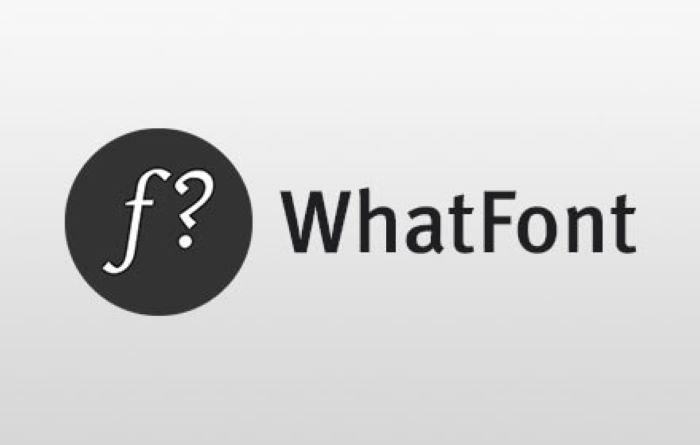Fonts add personality and emotion to the words we read online every day. But with over half a million available fonts, identifying an eye-catching typeface can be tedious. Apps like WhatFont by MyFonts promises quick and easy font discovery through uploading samples or by providing a URL. However, what Whatfont alternative exist if you want to avoid closed source tools or have other specific needs? Let’s find out.
First, let’s look at why WhatFont has become many designers’ go-to for font identification among the sea of online tools.
What Makes WhatFont Useful for Font Spotting

As one of the earliest font finder tools on the web, WhatFont by MyFonts has had years to perfect its identification engine. It can recognize fonts across Latin and non-Latin scripts with a high degree of accuracy.
Some signature features that have contributed to its popularity:
– Support uploading font samples from images or documents
– Real-time font matching from any website URL
– Over half a million fonts across catalogue and Google to scan
– Ties in with a large font marketplace for easy licensing purchases
– Integrates with Adobe/Microsoft apps like Photoshop and Word
– Advanced filtering by font properties like weights and styles
The large collection spanning paid and free fonts means you get a lot of matches to sift through for that perfect typeface. And the integrations with mainstream design apps reduces friction for trying out potential matches.
However, there are still areas where free and open source Whatfont alternative can provide complementary strengths to WhatFont’s commercial offering. These include supporting niche font needs or avoiding platform lock-in.
FLOSS Font Finder Tools
Within open source communities like fonts.open-source.narkive.com, two go-to font identifier tools are:
– Font Finder by FontManage
– FontGet by Opensource.builders
As their names suggest, the core focus here is on figuring out fonts from image samples and then acquiring them easily. This makes them simpler Whatfont alternative compared to WhatFont but useful for basic font discovery purposes.
FontFinder lets you upload PNG/JPG samples which it matches against Google Fonts and common free font repositories aggregated from across the web. If an open license font gets successfully identified, you can download it directly from within the tool.
Similarly, FontGet draws matches from resources like Google Fonts and Font Library while supporting fewer overall fonts than commercial alternatives since the focus is on libre/open variants. It also features seamless integration for acquiring identified open fonts.
Within the open source font scene, this simplified focus of just identifying libre font matches from images and instantly acquiring them saves time. But you are naturally limited to open license fonts only, unlike paid marketplaces.
Accessible Font Finder Tools
For the visually impaired demographic relying on screen readers and other assistive tools, font identification poses unique challenges with most OCR-based solutions falling short.
Two exceptional open source font finder alternatives optimized for the blind/low vision community are:
– Font Finder by SRL Scientific Research Labs
– Font Inspector by Accessiweb
Both tools allow uploading font samples or specifying URLs which they scan using custom machine learning algorithms tailored for non-visual font attribute analysis.
The identified results get read out aloud using text-to-speech. Other accessible output options include physical braille support. Features like confidence ratings on matches and topological analysis to find visual similars also enable informed font selection without relying on visual cues.
Between the two, Font Inspector offers richer capabilities like batch analysis of multiple documents and files. It also ties in with the owner organization’s suite of web accessibility tools for a fully integrated pipeline.
Such niche open source font finder alternatives can fill critical gaps in empowering those with print disabilities or blindness where mainstream tools still struggle with stable accessibility support.
Self-Hosted Font Tools for Custom Workflows
Power users like designers or font curators working with large font libraries often need customized solutions tailored to their specific needs as an alternative to one-size-fits-all hosted tools.
Self-hosted open source font management systems like:
– Typeface by Josef Adamcik
– Font Library by Pastor of Muppets
Enable setting up your own font identification and management server with possibilities for integrating with existing workflows powered by mods and plugins.
For example Typeface offers fine-grained user access controls, metadata editing capabilities, and API access for querying fonts programmatically. Such flexibility allows tying in font identification and acquisition into proprietary design pipelines.
Font Library focuses more on multimedia format support allowing previewing font glyphs and specimens visually. The plugin ecosystem also enables custom match validation steps or linking with external font marketplaces.
By owning your own font analysis server, you gain more creative control over the font identification and onboarding process at scale rather than relying on external services.
Closing Thoughts on WhatFont Alternative
At first glance, the comprehensive capabilities of WhatFont combined with the MyFonts marketplace integration seems compelling as a one-stop font discovery solution.
But niche use cases like libre/open font matching, accessibility support for print disabilities and customizability benefits make a case for open source font finder alternatives like FontGet, Typeface and Font Inspector.
Using such FLOSS tools in conjunction for specialized needs while relying on WhatFont’s vast commercial catalogue can help strike the right balance. This way you optimize for specific font discovery and acquisition requirements across projects where needed without vendor lock-in.
The font identification journey should map to your creative vision rather than restricting possibilities. With these customizable open source tools at your fingertips, no visually appealing typeface out there can hide from your detective gaze!
If you enjoyed this article, you might also read this: ZenMate VPN Alternative

Brajesh Sharma is a tech writer at PopularExtension.com, where he provides expert reviews of Chrome extensions. With extensive experience in technology and coding, Brajesh offers insightful analyses to help users enhance their browser experience.
Stay updated with Brajesh’s latest reviews and tech tips by following him on Instagram and YouTube.


